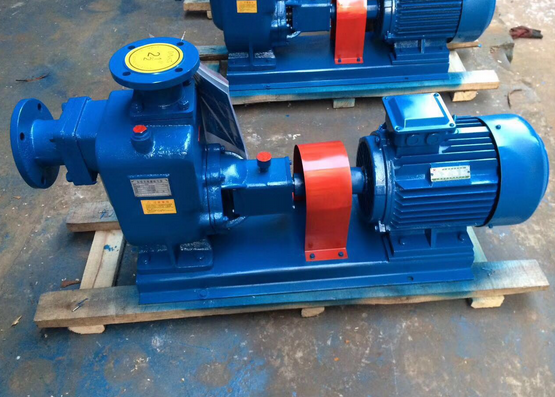Is the motor speed the same as the self-priming pump speed?
Theoretically, there is a certain relationship between the motor speed and the self-priming pump speed, but they are not always completely consistent. The following is a detailed analysis:
1. Definition and relationship
Motor speed: refers to the number of revolutions per minute of the motor, usually expressed in "rpm" (RPM). The speed of the motor is affected by many factors, including the power frequency, the number of motor poles and the transmission mechanism. It is an indispensable and important part of the fluid transmission system and has a direct impact on the performance of the pump.
Self-priming pump speed: refers to the number of times the pump shaft rotates per minute, also expressed in "rpm" (RPM). The speed on the self-priming pump nameplate is the designed speed, also known as the rated speed. The speed of the pump determines the size of its flow rate and outlet pressure, and is an important parameter affecting the performance of the water pump.
As the power source of the self-priming pump, the speed of the motor largely determines the speed of the self-priming pump. However, this does not mean that the speeds of the two must be exactly the same.
2. Consistency of speed
Ideal situation: Ideally, in order to ensure the normal operation and optimal performance of the pump, the speed of the motor should match or be equal to the speed of the self-priming pump. This ensures that the pump operates under rated conditions and reaches the designed flow rate and outlet pressure.
Actual situation: However, in actual applications, due to the influence of various factors (such as field conditions, changes in flow demand, pump efficiency loss, etc.), the speed of the motor and the speed of the self-priming pump are not always completely consistent. In order to adapt to different working conditions, the motor may need to be speed-regulated to maximize the output efficiency of the pump.

3. Influencing factors
Flow and head requirements: If the flow and head of the self-priming pump do not meet the design requirements, the output efficiency of the pump can be adjusted by changing the speed of the motor. For example, when the flow rate needs to be increased, the speed of the motor can be increased; when the flow rate needs to be reduced, the speed of the motor can be reduced.
Pump performance and life: If the speed of the motor and the speed of the self-priming pump are seriously inconsistent, the performance of the pump may be reduced and the life of the pump may be shortened. This is because the mismatched speed may cause the flow and head of the pump to be unstable, increase the vibration and noise of the pump, and cause wear and damage to key components such as bearings and seals.
4. Conclusion
In actual applications, the motor speed and self-priming pump speed should be reasonably selected according to the specific working conditions, and the equipment should be regularly inspected and maintained to ensure its normal operation and extend its service life. At the same time, for occasions where the pump output needs to be adjusted (such as water treatment and agricultural sprinkler irrigation), the ideal working effect can be achieved by changing the speed of the motor.




